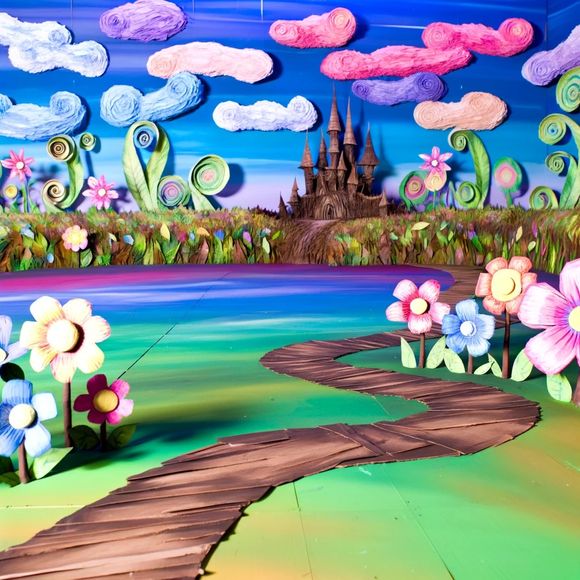In the world of filmmaking, where the spectacle of visuals often dictates the first impression, the use of papier-mâché stands out as an inventive and cost-effective solution for creating props and sets. This age-old technique, which involves the binding of paper pieces with an adhesive mixture, has found its niche in both independent cinema and larger productions looking to stretch their budgets.
The Historical Roots of Papier-Mâché in Film
Papier-mâché’s journey into the film industry dates back to the early 20th century when filmmakers sought affordable alternatives to more expensive materials like wood and metal. Its versatility and ease of use allowed set designers to mold intricate shapes and figures that were lightweight yet sturdy enough for short-term use.
Why Papier-Mâché?
Cost-Effectiveness: The primary appeal of papier-mâché lies in its cost-effectiveness. The materials required—primarily paper and glue—are inexpensive and readily available, making it a go-to choice for filmmakers working under tight financial constraints.
Flexibility and Creativity: Papier-mâché can be sculpted into almost any form, opening up endless possibilities for creative expression. This flexibility is particularly useful in fantasy or historical films, where unique and imaginative set pieces or props are required to build a world that diverges from modern reality.
Lightweight and Easy to Manipulate: Unlike heavier materials, papier-mâché is light and easy to transport, an essential feature for sets that might need to be moved frequently or quickly altered between takes.
Challenges and Limitations
While papier-mâché is advantageous for low-budget films, it does come with limitations. Its durability is a concern; it isn’t suited for long-term use or for props that must withstand a lot of interaction. Additionally, it can be susceptible to damage from water or fire, requiring careful handling and storage.
Case Studies
1. Independent Films: Many independent filmmakers have embraced papier-mâché to create everything from alien landscapes to elaborate historical sets. These productions often highlight the material’s ability to achieve a high level of detail and thematic accuracy at a fraction of the cost of traditional materials.
2. Animation and Stop-Motion: In animation, particularly stop-motion, papier-mâché provides a textured, organic feel that plastic or metal cannot replicate. Films like Tim Burton’s “Corpse Bride” and Henry Selick’s “Coraline” have utilized papier-mâché to give physical form to their whimsically macabre aesthetics.
The Future of Papier-Mâché in Cinema
As the film industry continues to evolve, the role of papier-mâché also changes. With the advent of digital effects and 3D printing, traditional methods like papier-mâché might seem outdated. However, the tactile authenticity it offers keeps it relevant in specific contexts, especially in an era where audiences crave both digital perfection and handcrafted charm.
In conclusion, papier-mâché remains a testament to the ingenuity of film creators, enabling them to build visually stunning worlds on limited budgets. Its continued use in cinema highlights the balance between artistic expression and economic reality, proving that sometimes, the simplest materials can lead to the most creative outcomes.
